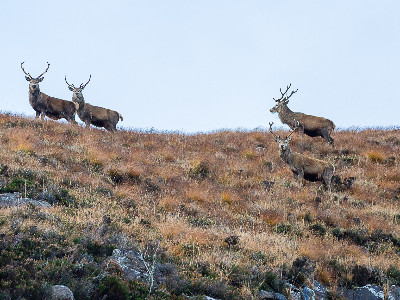Tuesday 30th March 2021, 3:45pm

Deer management in Scotland will in future focus on protecting tree-planting, woodland regeneration and peatland restoration from damage by overgrazing and trampling.
The Scottish Government’s recent response to the independent Deer Working Group report, published in January 2020, indicates that this plays a major role in natural solutions to reduce carbon emissions and to enhance and restore biodiversity in Scotland, while recognising the role that deer play in the rural economy.
Of the 99 recommendations made in the DWG report, the Scottish Government accepted in full or in principle 91 of them, and pledged to take this forward in the next parliamentary term.
Rural Affairs and Natural Environment Minister Ben Macpherson said: “As the scale of tackling climate change and the biodiversity crisis increases, and the measures needed to address these challenges become ever more necessary, it is evident that a significant stepping-up of deer management efforts is required.”
Stuart Younie CEO of Mountaineering Scotland said “We are encouraged by the Scottish Government’s intention to adopt almost all of the independent Deer Working Group’s recommendations and hope that whichever party wins in May they will also honour that commitment.
“Action on deer management is long overdue if we are to restore our natural habitats to promote biodiversity and help tackle climate change. In doing so, however, we need to understand the wider impact of these changes, and support local communities, landowners and deer managers to adapt to new practices in land and deer management.”
The Government response was welcomed by Scottish Environment LINK (SEL) who said: “We will simply not meet Scottish Government priorities of restoring peatlands, and increasing woodland cover through tree planting and natural woodland regeneration, unless deer populations are better managed and reduced to sustainable levels. These habitats are our vital carbon stores important for addressing both climate and nature emergencies.”
The Association of Deer Management Groups (ADMG) has given a “cautious welcome” to the Government response, while acknowledging “that the climate emergency now overrides all other policy when it comes to Scotland’s environment, and our members have committed to climate and biodiversity action across the board – peatland restoration, woodland planting and ongoing reduction in deer densities where necessary.”
The ADMG accepts the DWG recommendation, endorsed by the Scottish Government of 10 red deer per square kilometre as a general upper limit for areas of open range in the Highlands. SEL pointed out that research advises that a level of less than five red deer per square kilometre is required to allow trees to grow naturally, without fencing.
This discussion on deer density and environmental impacts is set to continue as sheep, hares and voles also need to be taken into account when it comes to the impacts of browsing on the natural environment.
Read the Scottish Government response to the Deer Working Group report here.
Photo by Annie MacDonald